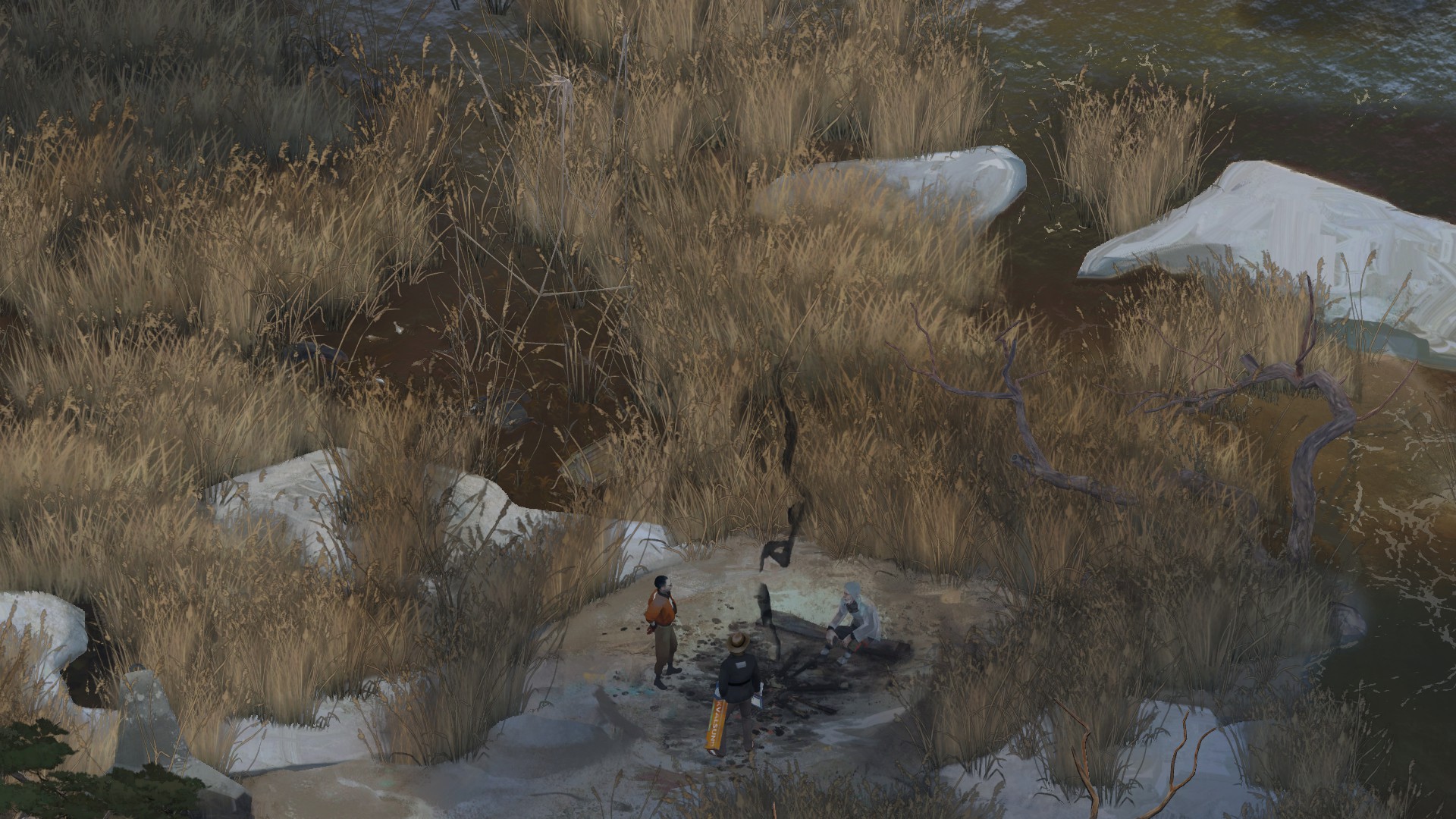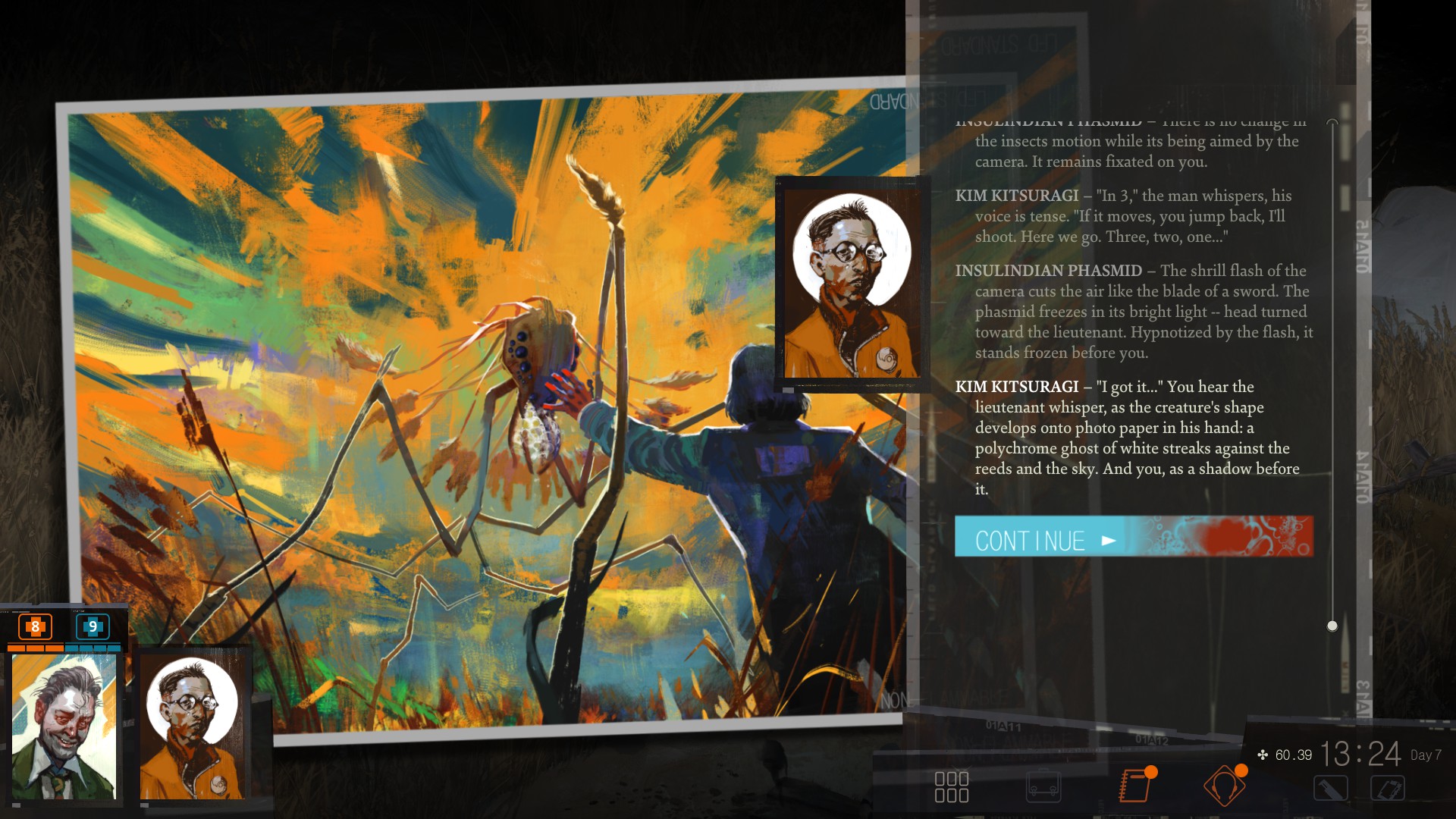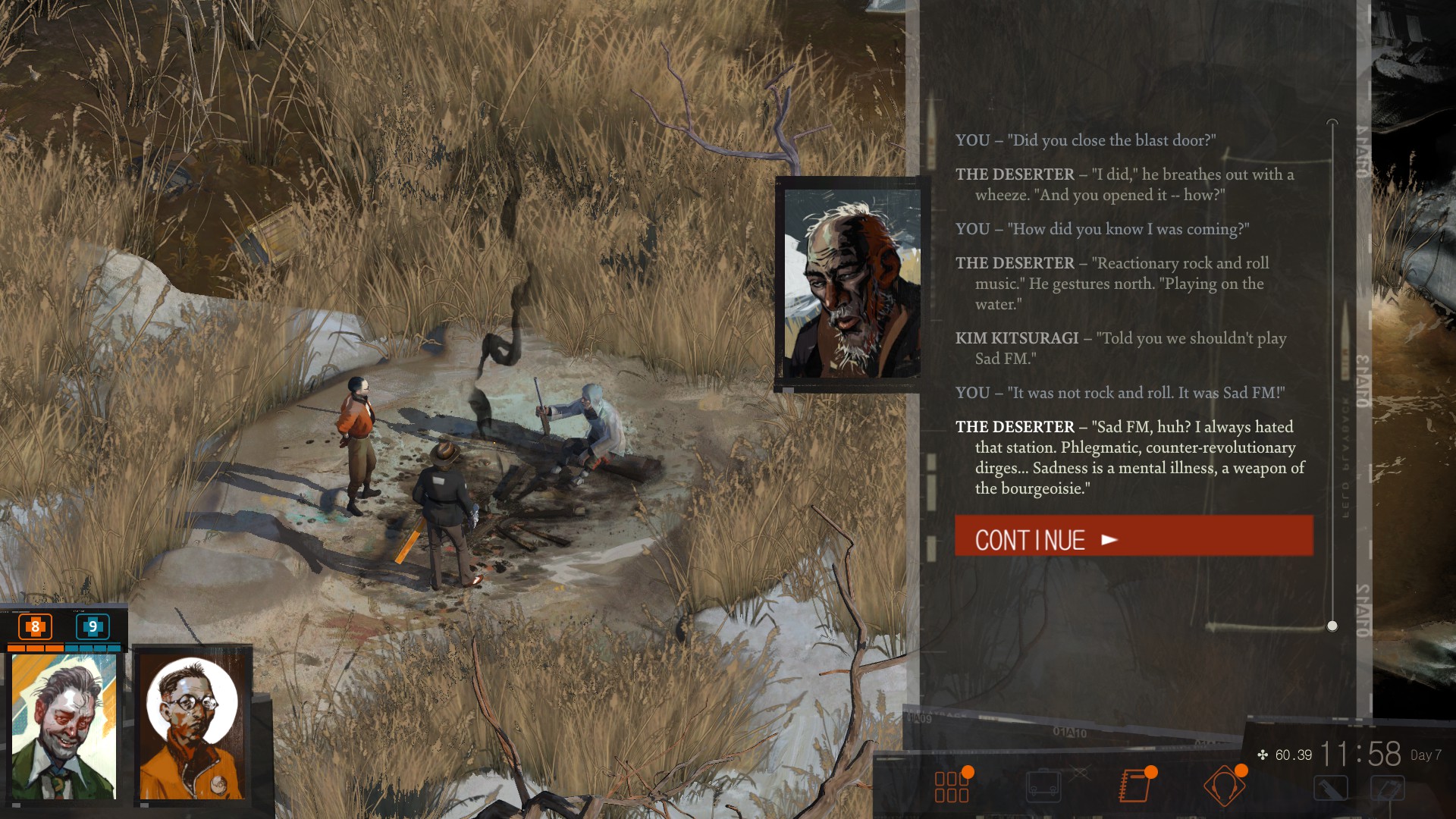Postscript is Cameron Kunzelman's weekly column about endings, apocalypses, deaths, bosses, and all sorts of other finalities.
Spoiler Warning: This article is chock full of spoilers about the denouement of Disco Elysum.
There are a lot of stories in Disco Elysium. The award-winning game has taken the detective story and the narrative RPG and welded them together so uniquely that it has, in a couple short months, become a new critical standard for thinking about games and the way they tell themselves. Players craft their own stories about their detectives rooting around with the impoverished and the wealthy and the saved and the damned and then, at the end, something miraculous happens: a mythological cryptid appears and tells you that none of this matters. And how that intersects with the rest of what Disco Elysium has going on is fascinating to me.
Chris Breault has done a great job at outlining the stories that Disco Elysium tells and discussing them in terms of what lasts about them and what doesn’t. Your strange detective roams a small section of the world and then, at the end of things, probably continues on with their life in some capacity. It’s a game that takes place in the middle of a big world and many lives, and it functions similarly to a novella. Philosophers Deleuze & Guattari said that the novella was organized not around the question of “what will happen?” but instead “what happened?” As soon as you can figure out the world, as soon as the mystery that kicked us off is solved, then life returns to normal. When life returns to normal, the reader doesn’t have an incentive to stick around. As Breault writes, the end of the game returns its characters to “a status quo too boring to depict.”
But I’ve been thinking about the cryptid.
Amidst all the excitement of discovery and mystery, the game wraps its ending of ideological change and national struggle and personal discovery around a semi-mythical creature. Two elderly cryptid hunters put the protagonist on the case to find something that lives in the reeds around Martinaise. Their relationship is founded on an encounter that one of the pair claimed to have as a child: once, vaguely, this thing reared up out of the reeds in front of her, mysteriously wavering in and out of existence before receding. When they met, it made him fall in love with her. Now, years later, the pair hunt for it again, but late in life she worries that it was never really true to begin with. The infection that is consensus reality has crept in and robbed her of this impossible thing that happened to her.

So at the end of the game, when the player gets a weird feeling about the rushes surrounding an ailing assassin central to the main plot, it’s revealed that this cryptozoological stick bug is real. It appeared, lithe and leaking some kind of psychic fluid, and it waxed and waned, almost threatening to disappear and disprove itself somehow. Against all of the evidence presented to him, my detective believed in the cryptid, and it paid off. Contrary to everyone else, including his partner, he held out for belief.
I directed him to reach out and touch it. My Inland Empire skill, which allows him to see through the veneer of the world and into the sepulchral spaces beyond mortal knowledge, kicked in. A conversation ensued.
“I exist,” it begins. The insulindian phasmid, the specific name of the cryptid, explains the universe. Here, beside the gunman that literally made the plot of this game appear with a single bang, we learn about the long history of this region. “Nothing ever ends for me,” it explains. “There is only room for two, maybe three pictures in my mind.” Later it tells me that its sense perceptions, memories, and experiences make it feel intruded upon. By what? “Shapes of plants and animals. And *internal* sensations. A swarm of sounds, tiny vibrations on the inside of my forearms - all speak of complexities totally beyond my understanding.” For the insulindian phasmid, what we call life is something to be put up with. It has to stand up on the face of things. It seems to have little joy or pain. Just a long series of things that have happened to it and a resiliency in the face of those happenings.
There is a purposeful otherworldly beauty here. Or maybe more precisely, there is a beauty of the world with the phasmid. We’ve spent the whole game digging around in the ruins of political ideology. Socialist weapons caches and cursed commercial districts lie in equal ruin while leaders and commoners alike champion the ideals that buried them. Martinaise tells dozens of stories about dashed hopes, and is overall quite bleak in its depiction of the possibility of a better future. You might make good friends. You might have a successful business. You might organize a better life for the people around you. But time will happen, and the human mind will happen, and the churning friction that works against all human creation will happen, and these things will pass on just like you will. Your works will measure against their potential for ruin, and like everything else, potential is always greater than actuality.
The insulindian phasmid is therefore a kind of narrative RPG version of Thomas Cole’s series The Course of Empire. The paintings begin with open nature and end with the ruins of the classical world being reclaimed by that same nature. On one hand, there’s a pessimism to it. On the other, there is an optimism in nature here. Things didn’t work this time, but maybe the next one will be right. The eternal churn of things in the world will afford the opportunity to come around again. The reeds will shake again. The insulindian phasmid will emerge for someone else; after the war or the insurrection or the singularity, it will still be there in the foliage. The land and the water, the buried concrete and the tides. The next go around could be the one that guarantees the future.

And it is interesting to see this cryptid, which calls the experience of human memory “a kaleidoscope of fire and writing glass” and “eternal damnation,” here at the end of 2019. With dying oceans and accelerating destructive weather patterns and increased nationalism that cannot help but align itself with a division between the climate haves and have nots, the beauty of the natural world doesn’t seem to be the guarantor of perspective and potential that Disco Elysium or the pastoral painter want it to be. In fact, the beauty of the thinking thing beyond the human already feels like an artifact of a kind of aesthetic beauty that we can’t call on anymore. Our own almost-mythological creatures die in droves all the time. The most beautiful sunsets are pictures drawn by emissions interacting with weather patterns.
There’s both a comfort and a quietism in the cryptid. It stands outside of humanity, cloning itself and living a life that is fundamentally alien to us, and that standing gives us a kind of perverse hope about how the world might live on without us. No matter what happens to the detective, something beautiful will live on in the world beyond him. No matter what happens to us, the mountains and the water and the trees will eventually recover and live their lives after us.
On one hand, it is comforting like a Li Po poem. And on the other, it presents a picture of humanity as hopefully compromised and unable to change. It is an escape hatch for both self-loathing and politics, a kind of way out that allows us to rethink responsibility across inhuman timelines and modes of experience. We can be forgiven for being cynical or sarcastic or mean or simply human because there’s something natural and honorable and worth preserving in the world. There’s the cryptid, and as long as we don’t mess things up too bad, it’ll be there. The mountains and the fields and the fish and, maybe, the cryptid.

The characters in Disco Elysium go back to the banality of their districts and their jobs and their lives in the shadow of what we’ve seen, but the insulindian phasmid is meant to be a guarantor of the numinous qualities of the natural world. Even after we empty everything out, even after human ideology and violence hollows us, then there’s still something out there in the natural world that we can save.
I still can’t decide if I think the cryptid is false hope. The beauty of a story is that it can have a dramatic climax where something from beyond the world restores our faith in the natural world. The cryptid gives us permission to think that this, too, shall pass.
But we will pass with this, whatever it is. The promise of the cryptid is the promise of the future, for sure, but it is one where our decisions and triumphs and mistakes do not matter. It is a future where human works are ruins. The beauty of the cryptid is that it confirms, without a doubt, that none of this matters. The horror of the cryptid is the same.
from VICE https://ift.tt/2Z1F7Zh
via cheap web hosting
No comments:
Post a Comment